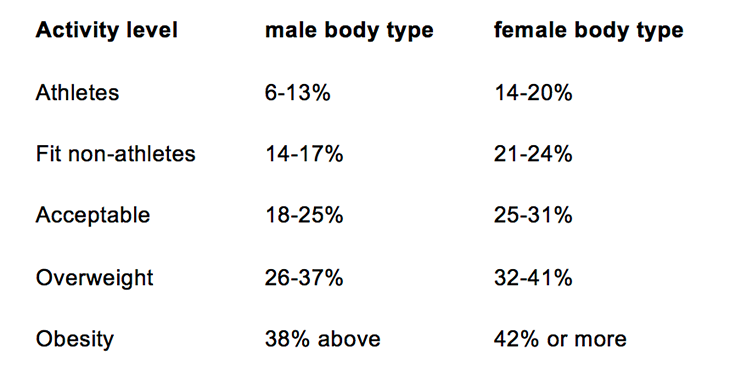
Many people are obsessed with finding out their ideal weight for their height, as well as their age. Some simply because of vanity, others for health reasons. Whatever the case may be, it is important to note that there is no real ideal weight for each person, as there are many factors to consider, such as age, height, gender, body fat distribution, muscle-fat ratio, and body shape. Not to mention race, and geographic location. Everyone is unique in essence, so it would not be proper to generalize. Having said that, note that there are accepted standards of ideal weight computed by experts.
Not everyone who is overweight is unhealthy or develops health problems. However, excess weight can increase the risk of developing a number of health conditions like obesity, diabetes, high blood pressure, and heart problems, just to mention a few. Some overweight people may not have health problems currently, but the risk of developing ailments in the future is higher if left unattended. So, it pays to be aware about your weight, and the accepted standards regarding it.
The most popular way to check if your weight is appropriate for you is through the body mass index (BMI). This measures a person’s weight in relation to their height. Based on the findings of the National Institutes of Health (NIH), a BMI of between 18.5 and 24.9 is ideal. Below 18.5 is underweight, between 25 and 29.9 is overweight, and over 30 is an indication of obesity. There are BMI calculators you can use online to check if your weight is ideal, but it is always best to consult your doctor. A sample chart from the NIH is presented here to give you an idea of BMI standards:

Note that BMI is a simple measurement for height and weight. It does not consider other factors such as distribution of fat, proportion of muscle mass, and waist measurements. Take for example high-performance athletes, who have very little body fat. They may have a high BMI due to having more muscle mass, but it does not mean they are overweight. BMI may be useful for measuring trends, but it should not be the only measure whether an individual’s weight is ideal or not.
The waist-to-hip ratio (WHR)
This measure compares a person’s waist size with that of their hips. The higher the waist measurement in proportion to the hips, the greater the risk of developing ailments. People who have more body fat around the middle are more likely to develop cardiovascular disease and diabetes. So bulging bellies are a sure sign of being overweight.
To measure your waist-to-hip ratio, measure around the waist, usually just above the belly button. Divide this measurement by the measurement around your hip at its widest part. For example, if an individual’s waist is 28 inches and the hips are 36, 28/36 is 0.77.
So what does this mean? WHR is different for males and females, as they have different body shapes. So, it follows that the risk of cardiovascular disease is also different. Take a look at the standards:
Males
Below 0.9 means the risk of cardiovascular disease (CVD) is low. 0.9 to 0.99 makes the risk moderate.1.0 and above, the risk is high.
Females
Below 0.8 makes the risk low, 0.8 to 0.89 is moderate, and 0.9 over makes the risk of CVD high.
Again, the figures can vary, depending on the source and population to which they apply.Still, WHR may be a better predictor of heart attacks and other ailments than BMI. Still, note that WHR does not accurately measure a person’s total body fat percentage, or their muscle-to-fat ratio.
Waist-to-height ratio is another tool experts use that may predict the risk of heart disease and other ailments like diabetes. It is considered more effective than BMI. To calculate this, divide your waist size by your height. If the result is 0.5 or less, chances are you have a healthy weight. For example, a female who is 5 feet 4 inches tall, should have a waist measurement below 32 inches. Similarly, a male of 6 feet should have a waist measurement below 36 inches. This will give them a waist-to-height ratio just under 0.5.
A study published in 2014 concluded that waist-to-height ratio was a more effective predictor of mortality as compared to BMI. Another study involving statistics of over 300,000 individuals from different ethnic groups also concluded that waist-to-height ratio was better than BMI at predicting hypertension, heart attacks, strokes, and diabetes.
Waist measurements are a good indicator of a person’s health risks, as fat around the middle can be harmful to the heart, liver, and kidneys.According to the CDC, men with a waist of 40 inches or over, and women with a waist line of 35 inches or more, have a higher risk of high blood pressure, type 2 diabetes, or coronary artery disease. However, this does not consider an individual’s height or hip size.
Another type of measurement is the body fat percentage. This is the weight of a person’s fat divided by their total weight. Total body fat includes essential and storage fat. Essential fat is needed for an individual to survive. It is important for several bodily functions. According to the American Council on Exercise (ACE), men should ideally have about 2-4 percent essential fat. For women, 10-13% is healthy. Storage fat is the fatty tissue that protects organs in the chest and abdomen, and can be used by the body for energy.
The ACE’s guidelines for total fat percentage for women and men are as follows:

Calculating body fat percentage is a good way to measure a person’s fitness level. The most common ways of measuring body fat percentage is to use a skinfold measurement, using special calipers to pinch the skin. Measurements will be done on the abdomen, thigh, upper arm (for women), and chest (for men). According to the ACE, this will provide an accurate reading within around 3.5%. Still, there are other techniques a health professional may use, like: air densitometry – which measures air displacement; hydrostatic body fat measuring (underwater weighing); bioelectrical impedance analysis, and dual energy X-ray absorptiometry (DXA).
Yet again, note that none of these can give a 100 percent accurate reading, but the estimates are close enough for a reasonable assessment . There are many doctor’s offices and gyms that offer devices for measuring an individual’s body fat percentage.
Clearly, there is no one accurate measurement for ideal weight and health. The four ways explained here, BMI, waist-to-hip ratio, waist-to-height ratio, and body-fat percentage, are best combined to get the most accurate idea of your ideal weight. Consulting your doctor or nutritionist is advised. Remember that each one of us is different, and there are many factors that affect an accurate reading. Some overweight people are not unhealthy, similarly, some “fit” people may be unhealthy. Still, overweight people usually are at a higher risk of getting many chronic diseases. And carrying excess weight is also tough on joints and the skeletal system, as many overweight people realize, particularly those afflicted with obesity. They say health is wealth, so do take care of your health and enjoy life.



